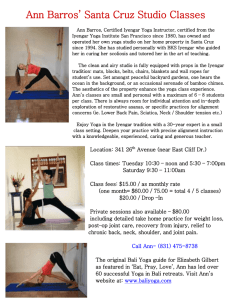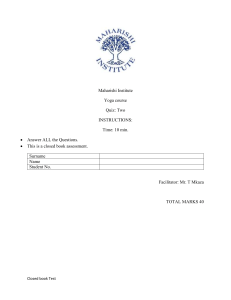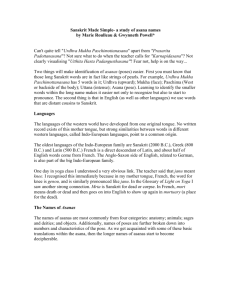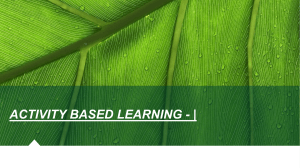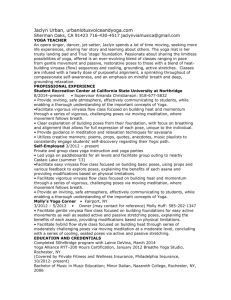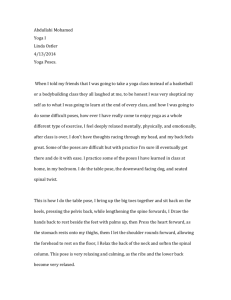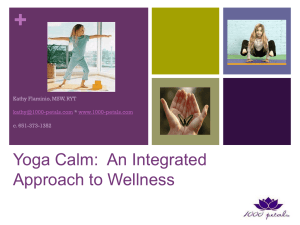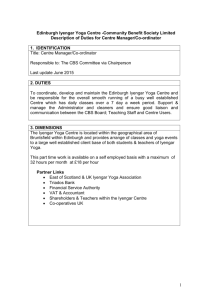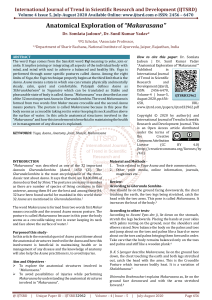Privates: - Yoga In Bali
advertisement
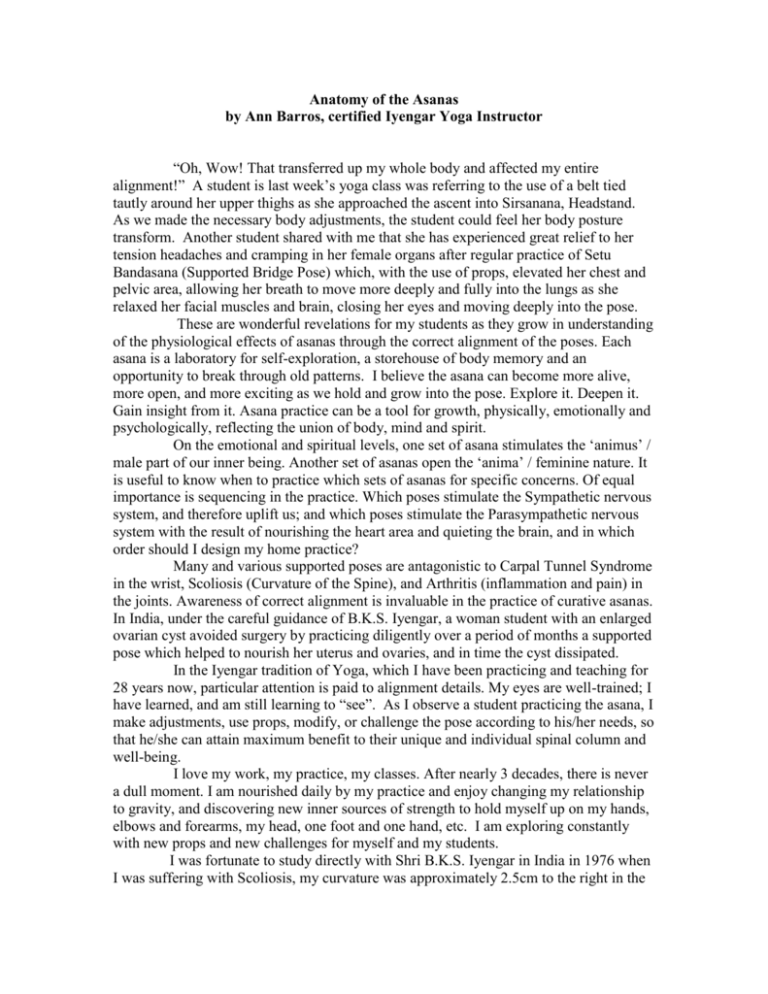
Anatomy of the Asanas by Ann Barros, certified Iyengar Yoga Instructor “Oh, Wow! That transferred up my whole body and affected my entire alignment!” A student is last week’s yoga class was referring to the use of a belt tied tautly around her upper thighs as she approached the ascent into Sirsanana, Headstand. As we made the necessary body adjustments, the student could feel her body posture transform. Another student shared with me that she has experienced great relief to her tension headaches and cramping in her female organs after regular practice of Setu Bandasana (Supported Bridge Pose) which, with the use of props, elevated her chest and pelvic area, allowing her breath to move more deeply and fully into the lungs as she relaxed her facial muscles and brain, closing her eyes and moving deeply into the pose. These are wonderful revelations for my students as they grow in understanding of the physiological effects of asanas through the correct alignment of the poses. Each asana is a laboratory for self-exploration, a storehouse of body memory and an opportunity to break through old patterns. I believe the asana can become more alive, more open, and more exciting as we hold and grow into the pose. Explore it. Deepen it. Gain insight from it. Asana practice can be a tool for growth, physically, emotionally and psychologically, reflecting the union of body, mind and spirit. On the emotional and spiritual levels, one set of asana stimulates the ‘animus’ / male part of our inner being. Another set of asanas open the ‘anima’ / feminine nature. It is useful to know when to practice which sets of asanas for specific concerns. Of equal importance is sequencing in the practice. Which poses stimulate the Sympathetic nervous system, and therefore uplift us; and which poses stimulate the Parasympathetic nervous system with the result of nourishing the heart area and quieting the brain, and in which order should I design my home practice? Many and various supported poses are antagonistic to Carpal Tunnel Syndrome in the wrist, Scoliosis (Curvature of the Spine), and Arthritis (inflammation and pain) in the joints. Awareness of correct alignment is invaluable in the practice of curative asanas. In India, under the careful guidance of B.K.S. Iyengar, a woman student with an enlarged ovarian cyst avoided surgery by practicing diligently over a period of months a supported pose which helped to nourish her uterus and ovaries, and in time the cyst dissipated. In the Iyengar tradition of Yoga, which I have been practicing and teaching for 28 years now, particular attention is paid to alignment details. My eyes are well-trained; I have learned, and am still learning to “see”. As I observe a student practicing the asana, I make adjustments, use props, modify, or challenge the pose according to his/her needs, so that he/she can attain maximum benefit to their unique and individual spinal column and well-being. I love my work, my practice, my classes. After nearly 3 decades, there is never a dull moment. I am nourished daily by my practice and enjoy changing my relationship to gravity, and discovering new inner sources of strength to hold myself up on my hands, elbows and forearms, my head, one foot and one hand, etc. I am exploring constantly with new props and new challenges for myself and my students. I was fortunate to study directly with Shri B.K.S. Iyengar in India in 1976 when I was suffering with Scoliosis, my curvature was approximately 2.5cm to the right in the mid-Thoracic vertebrae. Under his close scrutiny, I endured an intense re-positioning of the musculature of my back and through long held supported traction, my Spine went into vertical and perfect alignment. It was not easy or quick; and sometimes I cried, but the discipline and passion to cure my spine was there. The seed of inspiration was then planted in me and has remained my lifelong passion. I trained extensively at the Iyengar Yoga Institute in San Francisco, including several levels of Anatomy, Physiology, Kineisiology, Philosophy of Asana, 5 levels of Asana; 4 years of intensive and exciting study. I was certified in the Iyengar tradition from I.Y.I.S.F. in 1980. I have traveled to Bali almost 40 times with my Yoga In Bali tours and appreciate that Iyengar yoga is now respected world-wide through sharing with both participants coming to Bali from the US, and others coming from all over Asai and Europe. At the end of each class I say “Namaste” which means I honor the Divine in you of Love, of Light, of Truth. I honor that place in you and that place in me where we are One.
